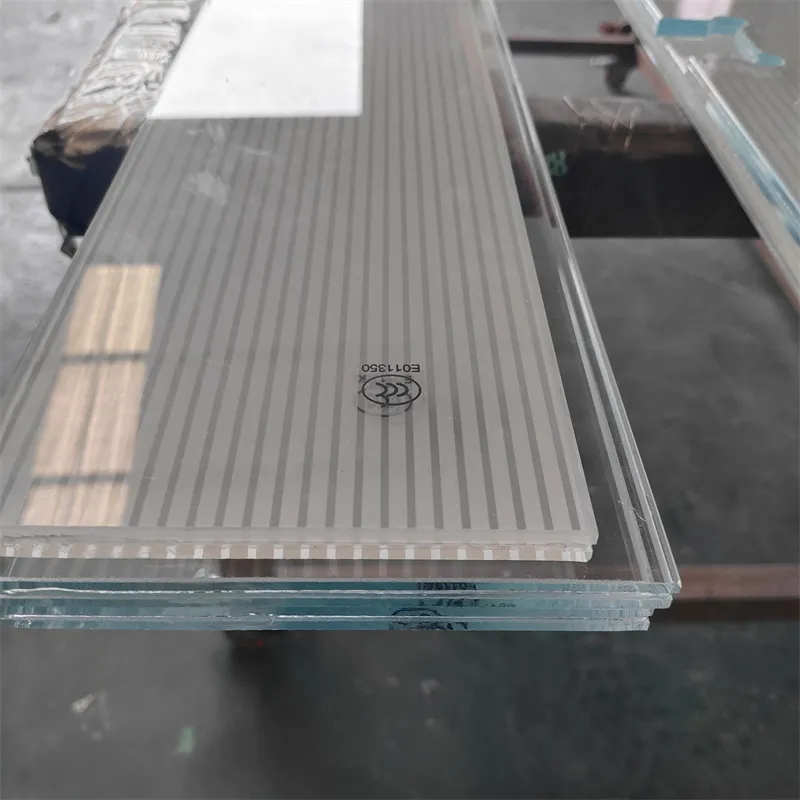Nov . 10, 2024 21:03 Back to list
Price Overview for Clear Toughened Glass and Its Variants
Understanding the Pricing of Clear Toughened Glass
Clear toughened glass, also known as tempered glass, has gained significant popularity in various applications due to its strength, safety features, and aesthetic qualities. Commonly used in residential, commercial, and automotive sectors, this premium glass product has specific pricing factors that potential buyers should consider. In this article, we will explore the factors influencing the price of clear toughened glass and provide insights into its advantages and applications.
What is Clear Toughened Glass?
Clear toughened glass is produced through a special heating and cooling process. Initially, the glass is heated to approximately 620 degrees Celsius, followed by rapid cooling. This tempering process increases the glass's strength compared to regular glass, making it more resistant to impacts and thermal stress. When broken, toughened glass shatters into small, blunt pieces rather than sharp shards, significantly reducing injury risks.
Factors Influencing the Price of Clear Toughened Glass
1. Thickness and Dimensions The thickness of the glass significantly impacts its price. Common thicknesses range from 4mm to 19mm, with thicker glass being more expensive due to the higher material costs and greater manufacturing challenges. Additionally, larger dimensions increase the overall price, as more raw materials are required and shipping costs also rise.
2. Manufacturing Process The quality of manufacturing can vary widely depending on the technology and equipment used by different glass manufacturers. Advanced processes often yield higher-quality glass, which may come at a premium price. Producing clear toughened glass requires sophisticated methods and stringent quality controls, contributing to its cost.
3. Customization and Treatment Many buyers seek customized solutions, which can include cut-to-size pieces, specific edge treatments, or additional coatings for enhanced durability or aesthetics. Such customizations typically result in higher prices. For instance, low-E glass coatings for energy efficiency can add to the overall cost, reflecting the added value.
4. Market Demand Prices for clear toughened glass can fluctuate based on market demand and trends in construction or interior design. High demand in certain industries can lead to price hikes. For example, an increase in commercial building projects often results in a surge in demand for toughened glass, thereby influencing pricing dynamics.
5. Location and Transportation Costs The geographical location of the buyer can also affect pricing. Areas far from manufacturing facilities may incur additional transportation costs, impacting the final price. Import duties and taxes may apply for buyers sourcing glass from overseas, further increasing costs.
clear toughened glass price

6. Supplier Reputation Established suppliers with a proven track record of quality and service may charge higher prices than lesser-known competitors. Investing in quality toughened glass from reputable suppliers can provide long-term benefits, including warranties and superior customer support.
Applications of Clear Toughened Glass
Clear toughened glass is versatile and suitable for various applications. Here are some common uses
- Architecture and Building Toughened glass is widely used in facades, windows, and balustrades due to its strength and safety features. Its aesthetic appeal also makes it a popular choice for modern architectural designs.
- Furniture Many furniture items, such as tables and display cases, incorporate toughened glass for both durability and style.
- Shower Enclosures In bathrooms, toughened glass is commonly used for shower doors and enclosures, offering a contemporary look while ensuring safety.
- Automotive Glass In the automotive industry, toughened glass is used for side and rear windows, contributing to vehicle safety.
Conclusion
Investing in clear toughened glass can be a wise decision due to its myriad benefits, including safety, durability, and aesthetic appeal. Understanding the factors that influence its price is crucial for consumers, builders, and designers alike. By weighing considerations such as thickness, manufacturing quality, customization, market demand, and supplier reputation, buyers can make informed decisions that best suit their needs. Whether used in residential or commercial applications, clear toughened glass remains a top choice in today’s construction and design markets.
-
Safety and Style with Premium Laminated Glass Solutions
NewsJun.24,2025
-
Reinvents Security with Premium Wired Glass
NewsJun.24,2025
-
Premium Float Glass Line for Modern Architecture
NewsJun.24,2025
-
Low Emissivity Glass for Energy-Efficient Architecture
NewsJun.24,2025
-
High-Performance Insulated Glass Solutions for Modern Architecture
NewsJun.24,2025
-
Elevates Interior Style with Premium Silver Mirror
NewsJun.24,2025
Related PRODUCTS














